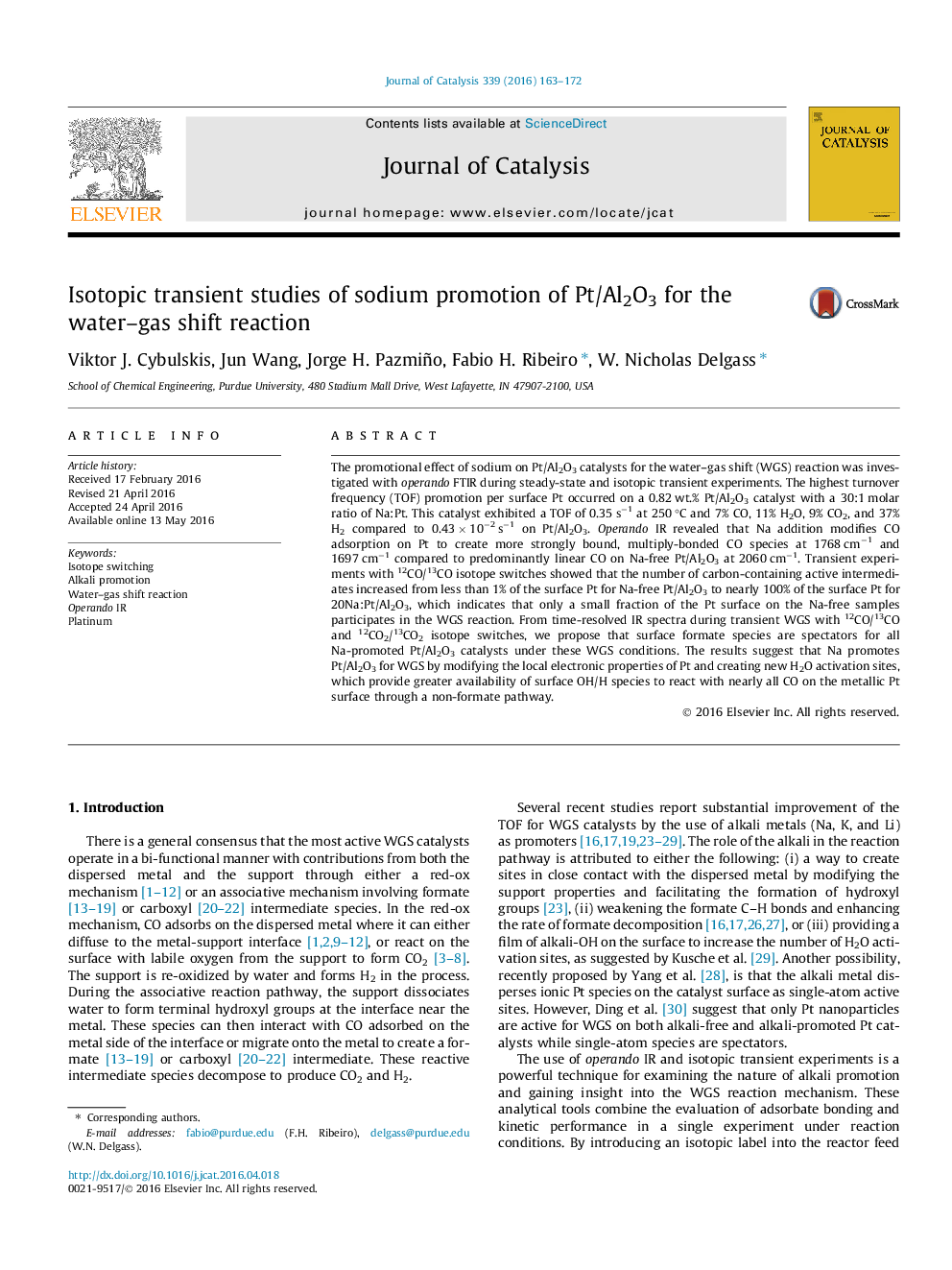| Article ID | Journal | Published Year | Pages | File Type |
|---|---|---|---|---|
| 60576 | Journal of Catalysis | 2016 | 10 Pages |
•Combined operando IR and isotope transient method to count actual CO active sites.•Na modifies local electronic properties of Pt to affect CO and activates H2O.•Transient response corrected for CO2 re-adsorption identifies true active species.•Less than 1% surface Pt active on Pt/Al2O3; 100% surface Pt active on 20Na:Pt/Al2O3.•Formate intermediates are spectator species for WGS on Pt/Al2O3 and Na–Pt/Al2O3.
The promotional effect of sodium on Pt/Al2O3 catalysts for the water–gas shift (WGS) reaction was investigated with operando FTIR during steady-state and isotopic transient experiments. The highest turnover frequency (TOF) promotion per surface Pt occurred on a 0.82 wt.% Pt/Al2O3 catalyst with a 30:1 molar ratio of Na:Pt. This catalyst exhibited a TOF of 0.35 s−1 at 250 °C and 7% CO, 11% H2O, 9% CO2, and 37% H2 compared to 0.43 × 10−2 s−1 on Pt/Al2O3. Operando IR revealed that Na addition modifies CO adsorption on Pt to create more strongly bound, multiply-bonded CO species at 1768 cm−1 and 1697 cm−1 compared to predominantly linear CO on Na-free Pt/Al2O3 at 2060 cm−1. Transient experiments with 12CO/13CO isotope switches showed that the number of carbon-containing active intermediates increased from less than 1% of the surface Pt for Na-free Pt/Al2O3 to nearly 100% of the surface Pt for 20Na:Pt/Al2O3, which indicates that only a small fraction of the Pt surface on the Na-free samples participates in the WGS reaction. From time-resolved IR spectra during transient WGS with 12CO/13CO and 12CO2/13CO2 isotope switches, we propose that surface formate species are spectators for all Na-promoted Pt/Al2O3 catalysts under these WGS conditions. The results suggest that Na promotes Pt/Al2O3 for WGS by modifying the local electronic properties of Pt and creating new H2O activation sites, which provide greater availability of surface OH/H species to react with nearly all CO on the metallic Pt surface through a non-formate pathway.
Graphical abstractFigure optionsDownload full-size imageDownload high-quality image (164 K)Download as PowerPoint slide
